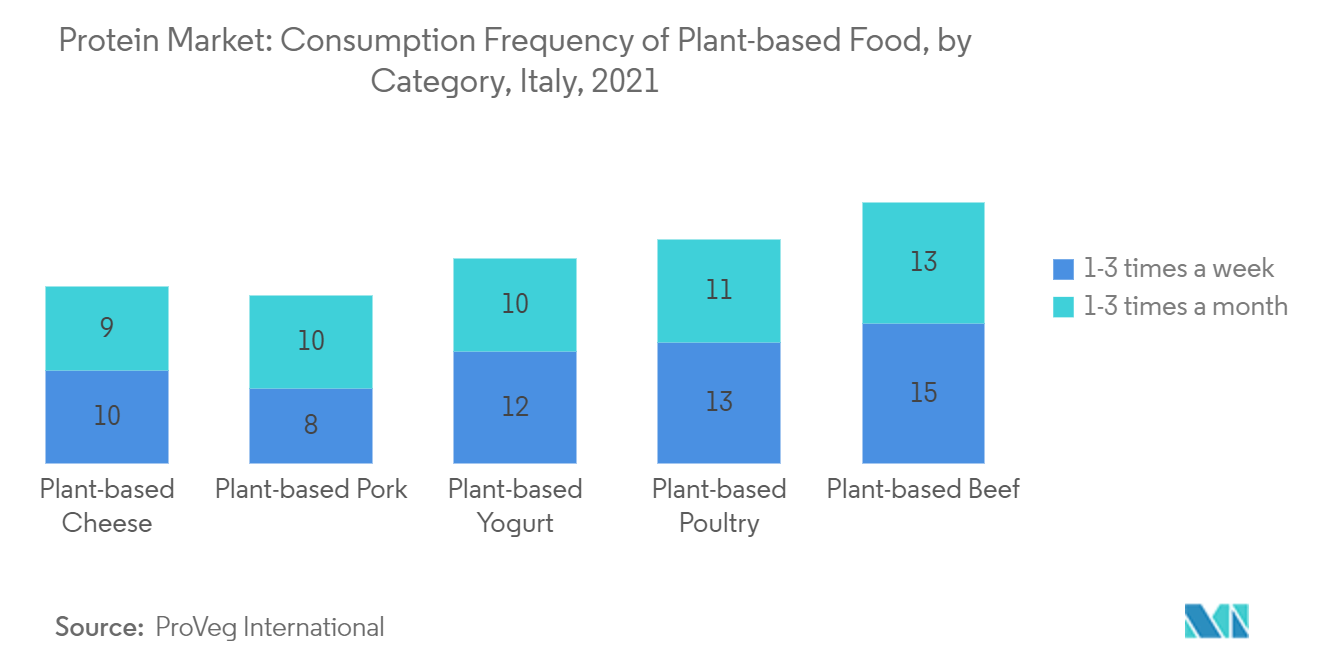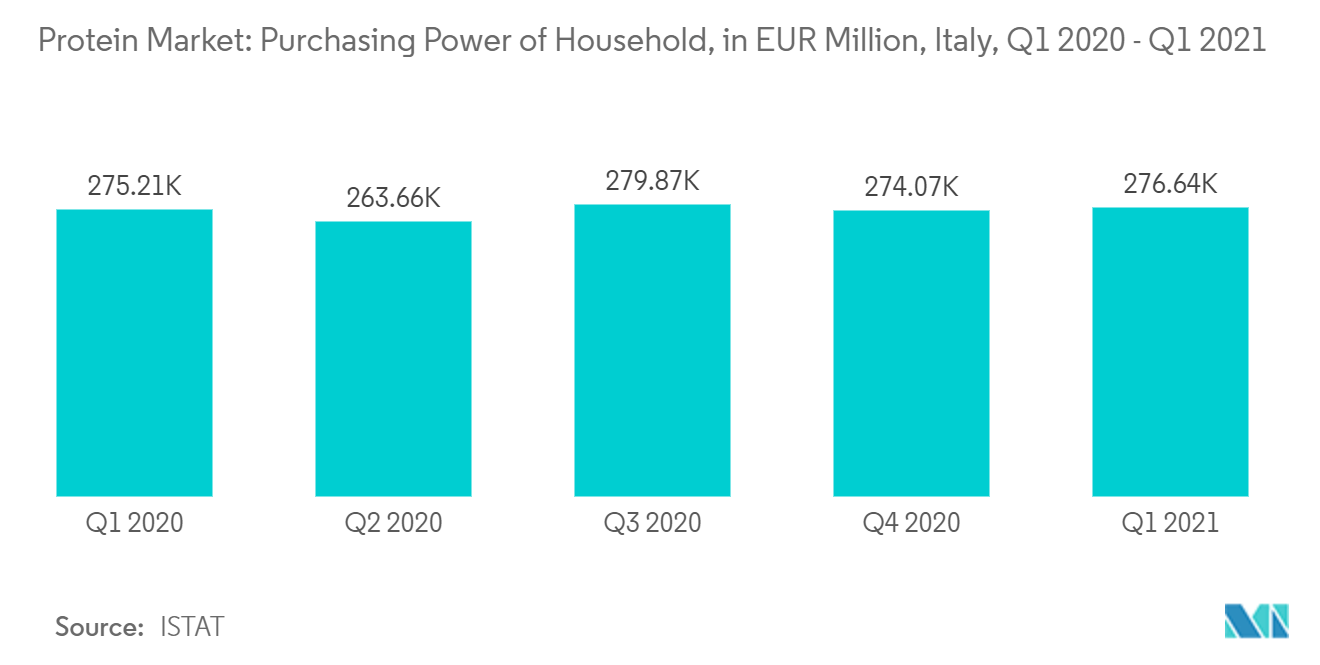Market Trends of Italy Protein Industry
Growing Consumer Preference for Protein-Fortified Foods
- The high protein claim trend is gaining traction in European countries like Italy, where the number of high protein claims on the launches of food and drinks is steadily increasing. In Italy, the percentage of products with high protein claims is low. Still, the absolute number has increased significantly in recent years, making 'high in protein' one of the most popular claims in the Italian food and drinks market.
- Italian consumers are looking for more milk protein not only in their food but also in their drinks and snacks. As the geriatric population increases in Italy, medical nutritional products that support bone and muscle maintenance are in high demand. Hence, animal protein ingredients like milk protein ingredients have been in high demand in recent years. High protein/protein-infused foods and beverages are becoming more popular on retail shelves in Italy.
- According to the Union Food Association of Italy, in 2021, about 37.9% of Italian households made vegetable meat part of their food choices, reaching an estimated 22 million consumers. The changing consumer perceptions in the country towards plant-based protein-fortified and healthy foods are mainly driving the segment. The high demand from these industries largely boosted the country's consumption of soy and wheat proteins. Furthermore, mainstream consumers understand that protein supports satiety, weight loss and management, and muscle building and maintenance.
- Owing to high nutritional quality and versatile functional properties, plant protein ingredients are widely used in many food formulations, such as dairy desserts, nutritional beverages, ice cream, yogurt, spreads, meat products, confectionery, and baked goods.

Food and Beverage is the Largest End User
- Italy, renowned for its culinary heritage and gastronomic prowess, has witnessed a profound shift in dietary patterns. As the food and beverage sector embraces innovation and adapts to changing consumer demands, protein-rich products have emerged as a central focus. The contemporary consumer, cognizant of health and wellness trends, increasingly seeks protein sources not only for muscle-building purposes but also for their role in weight management, satiety, and overall well-being.
- The rise of health consciousness has spurred a demand for protein-infused edibles, prompting food and beverage manufacturers to revamp their product portfolios. From protein-fortified pasta and bread to beverages enriched with plant-based proteins, the market landscape has undergone a notable transformation. This paradigm shift has catalyzed a symbiotic relationship between the food and beverage sector and the protein market, as both industries mutually reinforce and stimulate each other's growth.
- Furthermore, technological advancements have expedited the production and distribution of protein-rich offerings. Novel processing techniques and ingredient innovations have enabled manufacturers to develop products that not only meet nutritional requirements but also appeal to evolving palates. The diversification of protein sources, including plant-based alternatives like soy, pea, and lentil proteins, resonates with the burgeoning trend of flexitarianism and veganism, thus expanding the consumer base and propelling market expansion. In addition, the rising per capita income and purchasing power of households is one of the driving factors for Italy's protein market. According to the Economy and Finance (Italy), the average income of Italians in 2021 stood at EUR 22,540.


